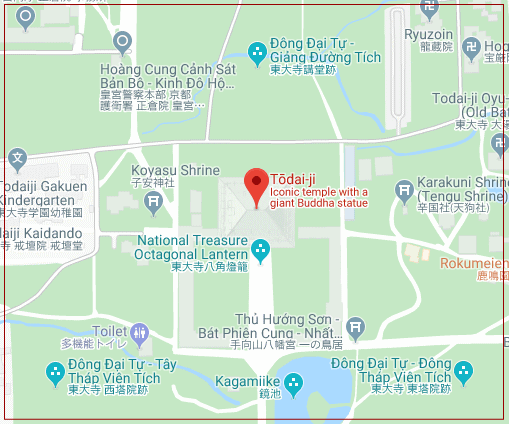A Grand Eye-Opening
 It must have been a long wait for Emperor Shōmu. One April day in 752, almost a decade after his edict in 743, the golden Buddha statue was finally eye-opened. It was a huge one, really huge, measuring 14.7 meters (48.23 ft) high and 70 meters (229.68 ft) around the podium. On this day, the precincts of Tōdaiji Temple was filled with over ten thousand people, including Shōmu himself, Kōmyō (his wife) and Empress Kōken (his daughter and then the ruler) attending this magnificent inspiriting event. The ceremony was officiated by Bodhisena, an Indian-born guru and the founder of the Kegon School and invited by Master Gyōki, the supervisor of the Buddha image project.
It must have been a long wait for Emperor Shōmu. One April day in 752, almost a decade after his edict in 743, the golden Buddha statue was finally eye-opened. It was a huge one, really huge, measuring 14.7 meters (48.23 ft) high and 70 meters (229.68 ft) around the podium. On this day, the precincts of Tōdaiji Temple was filled with over ten thousand people, including Shōmu himself, Kōmyō (his wife) and Empress Kōken (his daughter and then the ruler) attending this magnificent inspiriting event. The ceremony was officiated by Bodhisena, an Indian-born guru and the founder of the Kegon School and invited by Master Gyōki, the supervisor of the Buddha image project.
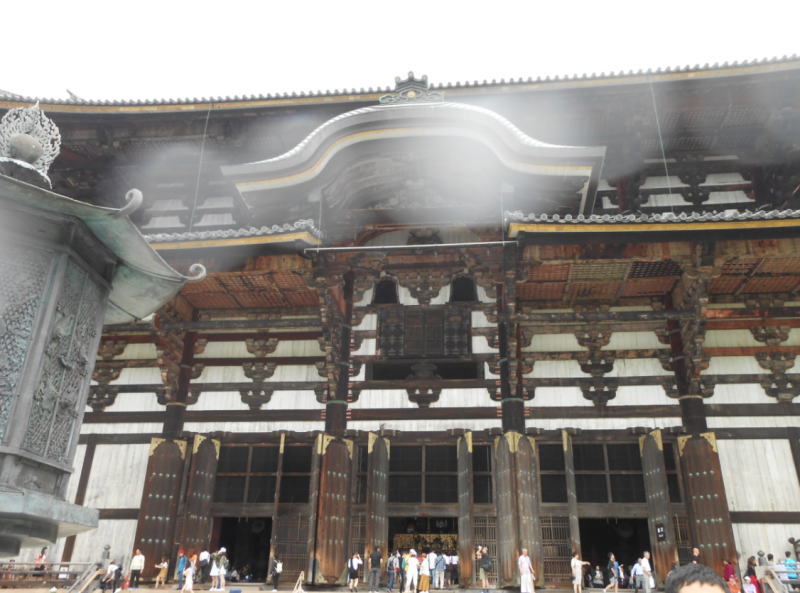 Among various Buddha representations, Shōmu chose Vairochana or “World Illuminator”, namely, the master of universal truths. He had made this decision when he visited Kawachi Province (present eastern Osaka), where he was deeply moved to see people so devoted to Vairochana Buddha! Now, with his long-held wish fulfilled, he was probably looking up the image with tears of deep emotion. And the brand new Vairochana image might look particularly compassionate at that moment. The image was a typical Buddha expression, with the left hand forming the Varada Mudra (the sign of giving) and the right, Abhaya Mudra (the symbol of relief and safety).
Among various Buddha representations, Shōmu chose Vairochana or “World Illuminator”, namely, the master of universal truths. He had made this decision when he visited Kawachi Province (present eastern Osaka), where he was deeply moved to see people so devoted to Vairochana Buddha! Now, with his long-held wish fulfilled, he was probably looking up the image with tears of deep emotion. And the brand new Vairochana image might look particularly compassionate at that moment. The image was a typical Buddha expression, with the left hand forming the Varada Mudra (the sign of giving) and the right, Abhaya Mudra (the symbol of relief and safety).
| Varada Mudra |
Abhaya Mudra |
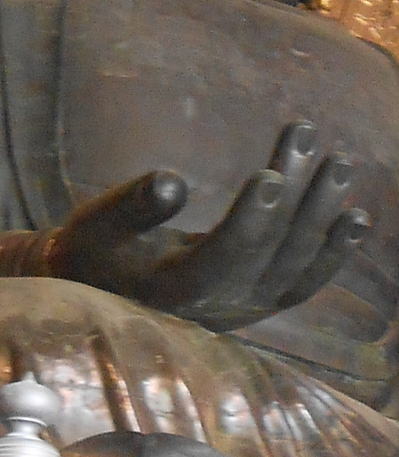
|
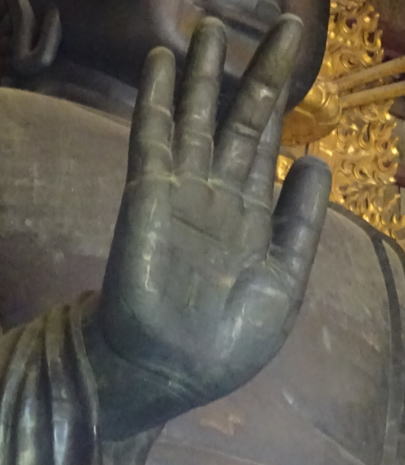
|
The Origin of Tōdaiji Temple
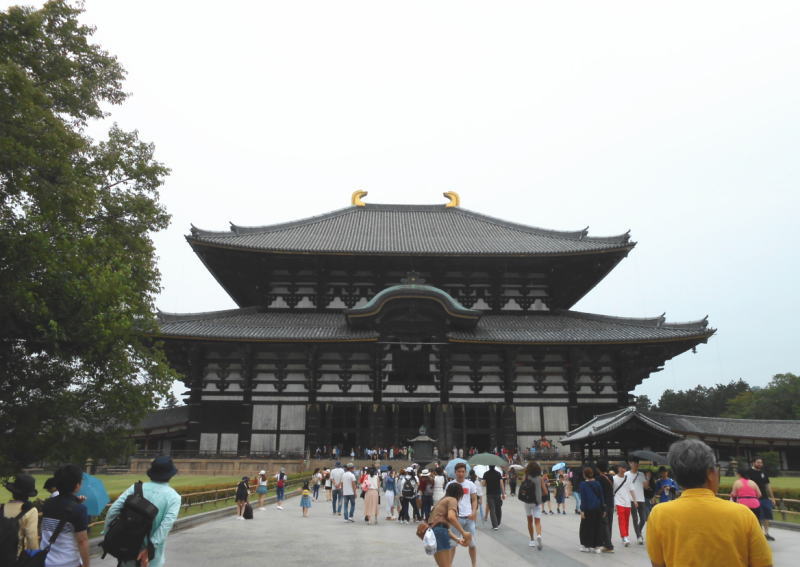 Tōdaiji Temple was initially called Kin Shō Ji (lit. Golden-Bell Temple) and was built in memory of Motoi, Shōmu’s long-awaited, the first and only son, who suddenly became ill and died shortly before his first birthday. It wasn’t intended for the big Buddha’s house in the beginning.
Tōdaiji Temple was initially called Kin Shō Ji (lit. Golden-Bell Temple) and was built in memory of Motoi, Shōmu’s long-awaited, the first and only son, who suddenly became ill and died shortly before his first birthday. It wasn’t intended for the big Buddha’s house in the beginning.
For the Buddha consecration site, Shōmu had initially another place in mind. It was Shigaraki in Ohmi Province (present Shiga Prefecture), but the plan was aborted after a series of disasters such as wildfire and earthquake. Discouraged by such ominous omens — not a felicitous place for Buddhas, Shōmu returned to Nara and decided on this temple (now probably the only reasonable choice). It had been renamed to Kin Kō Myō Ji (lit. Golden-Light Temple) when it was chosen as the Provincial Monastery of Yamato (presently Nara).
The present name of Tōdaiji was given after the Buddha image was consecrated at the location.
Distressed, Fatigued and Frustrated
 The society was a catalogue of every misfortune that could happen to a nation when Shōmu assumed the throne in 724 at the age of 24. He was the 45th emperor, after his grandmother and his aunt, Empresses Genmei and Genshō, respectively, who had succeeded Mommu (Shōmu’s father and passed away at 25). Indeed, it was a devastating time. There occurred all kinds of catastrophe — drought, famine, poor harvest, great earthquake and smallpox epidemic, in addition to political changes and conflicts.
The society was a catalogue of every misfortune that could happen to a nation when Shōmu assumed the throne in 724 at the age of 24. He was the 45th emperor, after his grandmother and his aunt, Empresses Genmei and Genshō, respectively, who had succeeded Mommu (Shōmu’s father and passed away at 25). Indeed, it was a devastating time. There occurred all kinds of catastrophe — drought, famine, poor harvest, great earthquake and smallpox epidemic, in addition to political changes and conflicts.
Before his coronation, the imperial capital had been transferred from Fujiwara (located near present Kashihara city) to Heijō Kyō (near Nara/Yamato-Koriyama city). It happened in 710, in the reign of Genmei. As the result of inter-clan conflicts since the previous era of Asuka (592 - 708), the Fujiwara Clan was becoming an overwhelming political power, led by Fujiwara Fuhito, Shōmu's grandfather, and the Four Fujiwara Brothers (his uncles and Fuhito's sons all died of smallpox in 737).
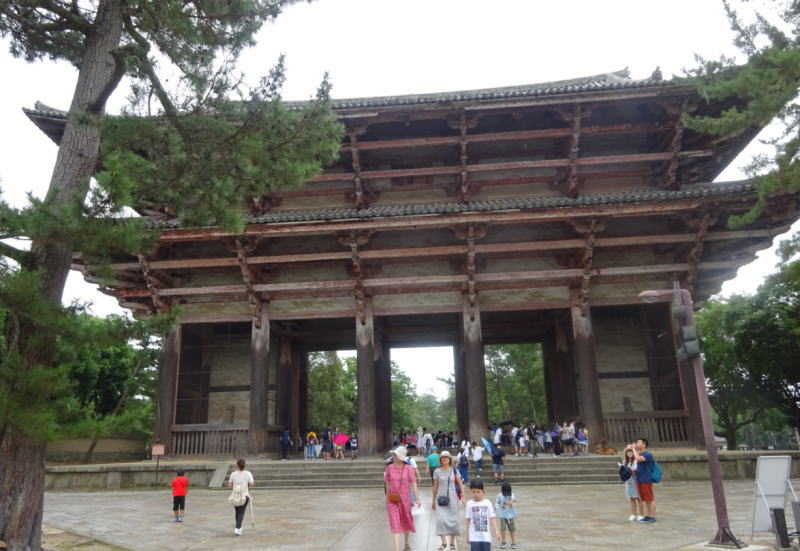 Fighting over power and influence, the Fujiwara and other clans caused the Incident of Prince Nagaya (729) and the Rebellion by Hirotsugu of Fujiwara (740). The latter mainly brought enormous distress to Shōmu, forcing him to move the capital several times to Kuni Kyō (in Kyoto), Naniwa Kyō (in Osaka) and Shigaraki No Miya (in Shiga), which eventually caused a significant burden on the people.
Fighting over power and influence, the Fujiwara and other clans caused the Incident of Prince Nagaya (729) and the Rebellion by Hirotsugu of Fujiwara (740). The latter mainly brought enormous distress to Shōmu, forcing him to move the capital several times to Kuni Kyō (in Kyoto), Naniwa Kyō (in Osaka) and Shigaraki No Miya (in Shiga), which eventually caused a significant burden on the people.
Finding a Light of Hope
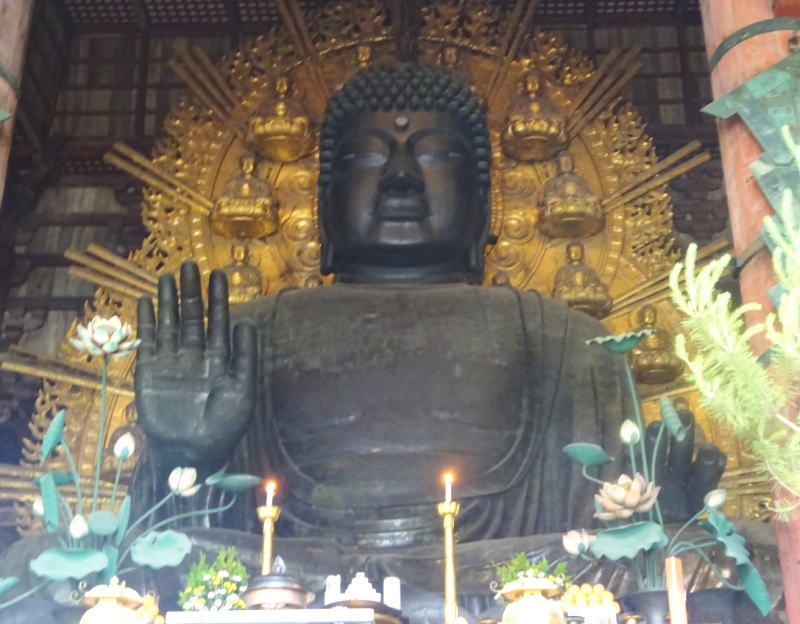 For an emperor distressed and disgusted by disasters and conflicts, Buddhism was the only source of hope. He issued the “Imperial Edict to Construct Provincial Monasteries and Convents” in 741 and promoted the study of Buddhism. The sutra he focused on was Avatamsaka and is called Kegon in Japanese, translated from the Chinese Huayanjing. The word Avatamsaka means “flower adornment” or “a flower garland” in Sanskrit.
For an emperor distressed and disgusted by disasters and conflicts, Buddhism was the only source of hope. He issued the “Imperial Edict to Construct Provincial Monasteries and Convents” in 741 and promoted the study of Buddhism. The sutra he focused on was Avatamsaka and is called Kegon in Japanese, translated from the Chinese Huayanjing. The word Avatamsaka means “flower adornment” or “a flower garland” in Sanskrit.
Avatamsaka is a Mahayana text compiled between 500 and 600 years after the passing of Shakyamuni Buddha (Siddharta Gautama), the founder of Buddhism. Featuring the Buddha’s discourses given during the initial stage of his ministry, it reveals the supreme state of his enlightenment that was beyond people’s comprehension. In 740 (in the time of Kin Shō Ji), a priest named Rōben took initiatives in organising lectures on the sutra. The project was so prestigious that an eminent priest called Simsang was invited far away from Silla (an ancient Korean dynasty) as a lecturer.
The lectures used the 60 fascicles of the Avatamsaka Sutra, a set of Chinese texts translated by Buddhabhadra. It took the class three years to finish the first round of lectures by working on 20 fascicles each year.
Other Images
The Vairochana image is flanked by acolytes or attending Bodhisattva images: Akasagarbha or “Boundless Space Treasury” Bodhisattva on the left side and Cintamanicakra on the right, both of which were created in the Edo Period (1603 - 1867). The first bodhisattva represents Buddha wisdom and loving-compassion that are vast and infinite like the universe while the second stands for “Chintamani Stone” (all-wish fulfilling jewel) combined with the force of Dharmachakra, originated from Chakram, an ancient weapon and symbolizing the power to eliminate delusions.
| Akasagarbha Bodhisattva |
Cintamanicakra |
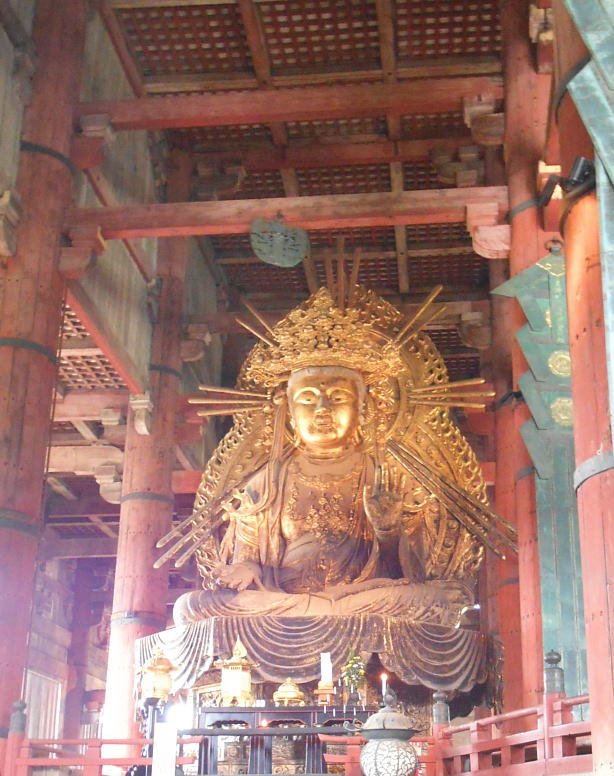
|
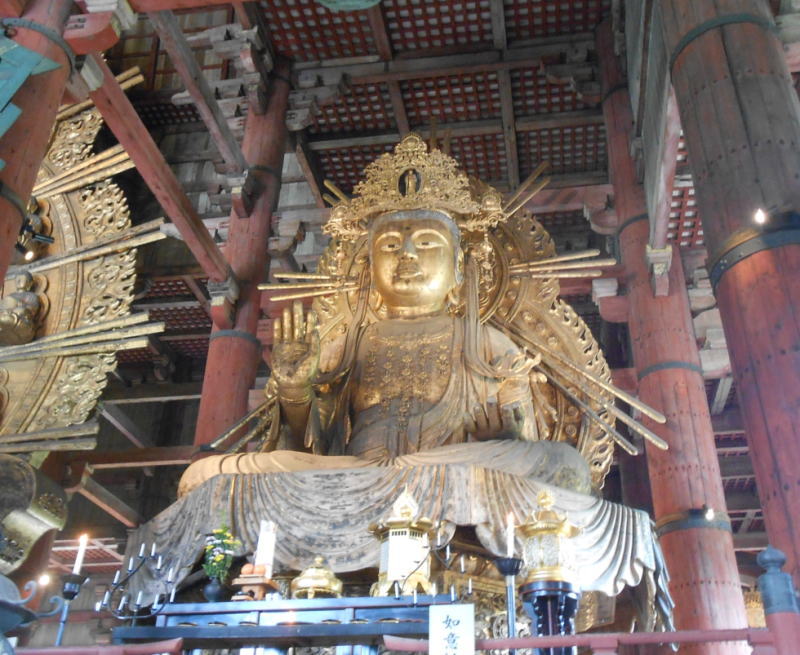
|
 In modern days, major repairs were performed on the Buddha’s Hall in the Meiji (1868 - 1912) and Shōwa (1926 - 1988) Periods to maintain the temple in good shape. In 1998, Tōdaiji Temple was registered as a World Cultural Heritage site. It’s highly valued as an asset in the ancient capital Nara.
In modern days, major repairs were performed on the Buddha’s Hall in the Meiji (1868 - 1912) and Shōwa (1926 - 1988) Periods to maintain the temple in good shape. In 1998, Tōdaiji Temple was registered as a World Cultural Heritage site. It’s highly valued as an asset in the ancient capital Nara.
Hi Deer!
Nowadays, they may not be so polite as they used to be. Who said the animal was the messenger of a deity? They don't even bow and have reduced to become a greedy, impudent creature, threating and poking any buyers of ‘deer cookies’. Yeah, they are still cute but be warned, they may bite the hand that feeds!
|




